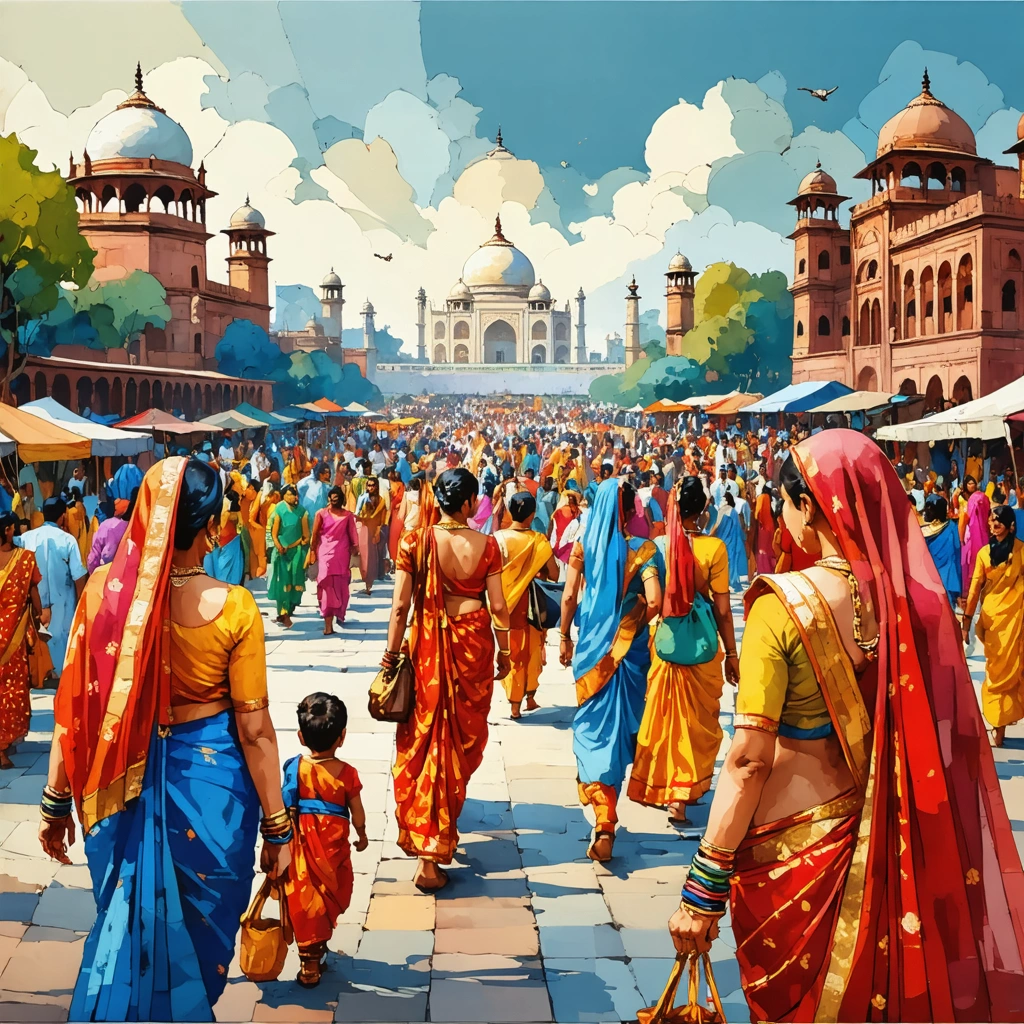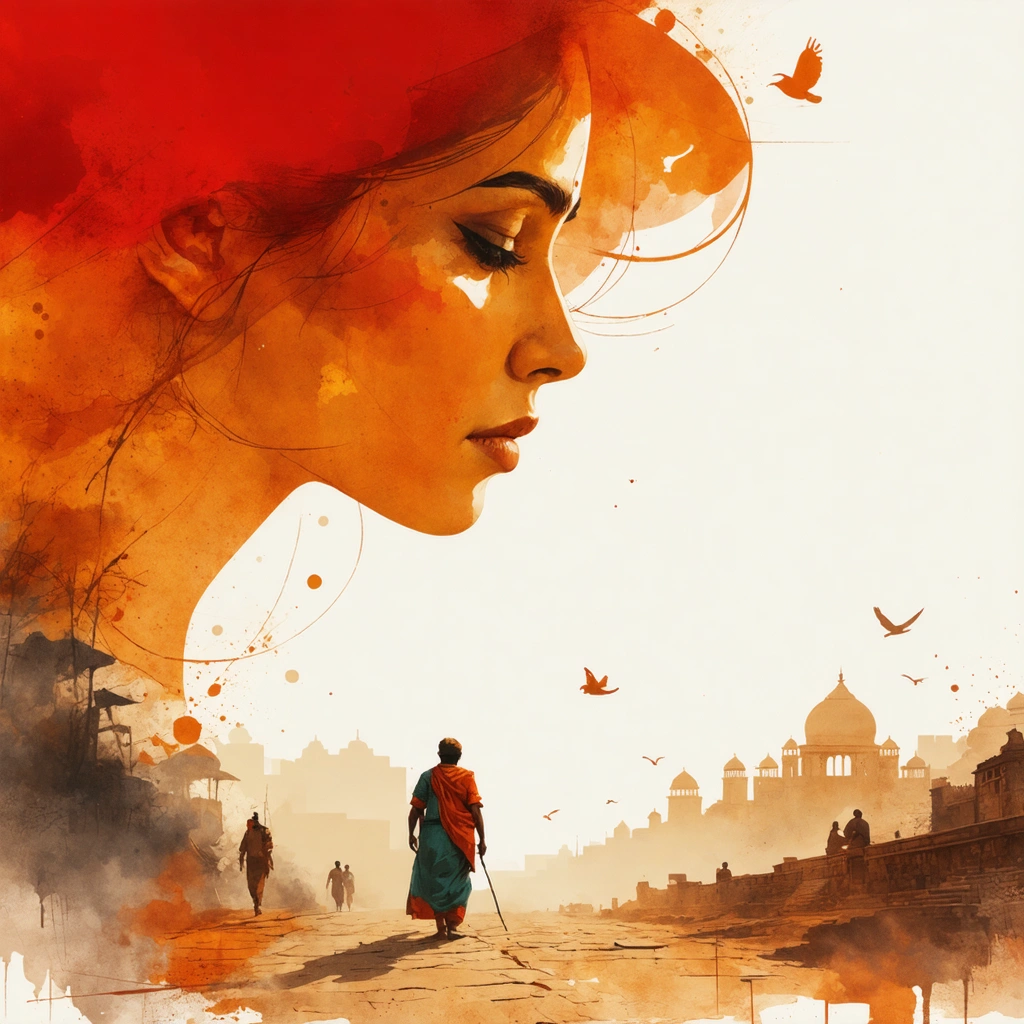
Step into the vibrant mosaic that is India—a land where every symbol, every color, every emblem tells a story steeped in centuries of tradition and transformation. But in 2025, as the world spins faster and global cultures intertwine, how do these symbols continue to shape and reflect the nation’s identity? Are we still connected to the essence of Bharat Ka Rashtriya Chinh, or has modernization blurred the lines? And what about the stories behind these symbols—like, who really designed the Tiranga Ka Design Kisne Kiya Tha, or what significance the Sengol Kya Hai holds in today’s India?
Why Cultural Symbols Matter More Than Ever
Imagine walking through a bustling Indian market in 2025. Amidst the hustle, you spot the tricolor fluttering proudly on a street lamp. That flag isn’t just fabric; it’s a living emblem of freedom, unity, and resilience. Yet, many wonder: do we truly grasp the depth behind these symbols, or have they become mere decorative elements? The richness of India’s cultural symbols is often taken for granted, overshadowed by rapid urbanization and an influx of global influences. This disconnect poses a quiet challenge—without understanding these symbols, the collective identity risks becoming diluted.
Take the Bharat Ka Rashtriya Chinh, for example. What does it stand for beyond its official status? How does it narrate the story of a civilization that has withstood invasions, colonization, and modernization? These symbols are not relics of the past; they are living, breathing parts of India's soul. When their stories fade, so does a part of what makes India uniquely India.
Unraveling the Stories Behind the Symbols
Let’s delve into some iconic emblems and uncover the fascinating tales that often go untold.
The Tiranga: Colors With a Story
Everyone knows the Indian national flag—the Tiranga—with its saffron, white, and green bands, and the Ashoka Chakra at its center. But have you ever paused to wonder, Tiranga Ka Design Kisne Kiya Tha? The answer takes us back to Pingali Venkayya, a freedom fighter and visionary who crafted the design that would become a beacon of hope for millions. His creation wasn’t just about aesthetics; each color and symbol was intentionally chosen to represent courage, peace, and fertility, while the wheel symbolized progress and righteousness.
Understanding this enriches our appreciation, reminding us that the flag is a tapestry of India’s aspirations and values. Yet, how many citizens today know about Pingali’s contribution or the deeper significance of the Ashoka Chakra?
What Is Sengol and Its Rising Relevance?
Moving beyond the flag, another symbol that has resurfaced in national discourse is the Sengol. But Sengol Kya Hai? Historically, the Sengol is a scepter symbolizing righteous authority, handed over to leaders as a mark of just governance. It echoes ancient Tamil traditions, linking spiritual and political power in a single emblem. In 2023, the Sengol gained renewed attention during the inauguration of India’s new capital, symbolizing a return to values rooted in justice and ethical leadership.
This revival prompts reflection: in an era dominated by technology and rapid change, can such symbols anchor India’s governance and cultural ethos? The Sengol, once a forgotten artifact, now sparks conversations about identity, heritage, and the moral compass guiding the nation.
Bridging Tradition and Modernity
India’s cultural symbols are not static museum pieces; they evolve and adapt, carrying forward ancient wisdom while embracing contemporary realities. The question is, how can we, as citizens and global observers, engage with these symbols meaningfully?
- By educating ourselves about the origins and meanings behind each emblem.
- By celebrating these symbols in ways that resonate with today’s youth, blending tradition with innovation.
- By fostering dialogue on how these symbols can inspire unity amidst diversity.
As we journey through this article, expect to uncover the layers behind India’s key cultural symbols, explore their historical roots, and understand their place in the collective consciousness of 2025 India. Whether you’re a student, a history enthusiast, or simply curious about what truly defines India, this exploration promises insights that connect past, present, and future.
So, are you ready to rediscover the heartbeats behind India’s cherished icons? Let’s embark on this cultural voyage together.

Cultural Symbols of India: Exploring the Symbols That Define India’s Cultural Identity in 2025
What Are the Key Cultural Symbols of India and Why Are They Important?
India's cultural identity is deeply rooted in a vast and diverse history that spans thousands of years. The cultural symbols of India are not just mere icons; they represent the values, traditions, and ethos that have shaped the nation’s collective consciousness. These symbols evoke a sense of pride, unity, and belonging among its people. Understanding these symbols helps us appreciate the rich tapestry of India's heritage, which includes art, religion, architecture, and national emblems.
What Is Bharat Ka Rashtriya Chinh (India's National Emblem)?
Bharat Ka Rashtriya Chinh, or the National Emblem of India, is an adaptation of the Lion Capital of Ashoka at Sarnath. Adopted on January 26, 1950, this emblem symbolizes power, courage, pride, and confidence.
The emblem features four Asiatic lions standing back to back, but only three lions are visible in the two-dimensional representation. Below the lions is a circular abacus with sculptures of a bull, a horse, an elephant, and a lion separated by intervening wheels known as Ashoka Chakras.
This emblem is significant because it connects modern India to its ancient heritage, specifically the Mauryan Empire under Emperor Ashoka, who was known for spreading the principles of peace and dharma (righteousness). The emblem is used on all official documents, currency, and government communications, symbolizing the sovereignty and authority of the Republic of India.
Who Designed the Indian National Flag and What Is the Story Behind the Tiranga Ka Design?
The Indian national flag, known as the Tiranga (meaning tricolor), was designed by Pingali Venkayya, an Indian freedom fighter and agriculturist. The flag was officially adopted on July 22, 1947, just before India gained independence.
The design of the Tiranga consists of three horizontal stripes of saffron (top), white (middle), and green (bottom), with a navy blue Ashoka Chakra (wheel) with 24 spokes in the center.
- Saffron symbolizes courage and sacrifice.
- White represents peace and truth.
- Green stands for faith and chivalry.
- The Ashoka Chakra in navy blue signifies the eternal wheel of law (Dharma Chakra) and progress.
The design was carefully chosen to reflect India's values and aspirations as a new sovereign nation. The incorporation of the Ashoka Chakra connects the flag to India's ancient history and its commitment to justice and progress.
What Is Sengol Kya Hai and Its Significance in Indian Culture?
Sengol is a traditional Tamil word referring to a golden sceptre or staff that symbolizes authority and righteous governance. Historically, it was given to kings and rulers as a mark of their right to govern with justice and benevolence.
In 2023, Sengol gained renewed prominence when the Indian government ceremoniously presented a Sengol to the newly inaugurated Parliament building in New Delhi. This act was symbolic, emphasizing the values of dharma (righteousness) and ethical governance that India aspires to uphold.
The Sengol represents:
- Legitimacy of authority through moral and ethical leadership.
- The continuity of India’s ancient traditions in modern governance.
- A reminder that power must be exercised with responsibility and fairness.
Its revival in the public sphere highlights India's ongoing effort to reconnect with its cultural roots while shaping its future political landscape.
How Do These Symbols Shape India’s Cultural Identity in 2025?
In 2025, India is a rapidly evolving nation, balancing tradition and modernity. The cultural symbols like Bharat Ka Rashtriya Chinh, the Tiranga, and Sengol serve as anchors that remind citizens of their shared heritage and values amid rapid change.
These symbols foster national unity and pride by:
- Encouraging respect for India’s historical achievements and ethical principles.
- Serving as visual and ideological reminders of India's sovereignty and democratic values.
- Inspiring citizens, especially the youth, to uphold the principles of justice, peace, and progress.
Furthermore, these symbols are embedded in various facets of everyday life, from educational curricula to government ceremonies and national celebrations, ensuring that cultural identity remains strong despite globalization pressures.
Additional Frequently Asked Questions About India’s Cultural Symbols
What Other Symbols Are Important in Indian Culture?
Besides the national emblem, flag, and Sengol, other important cultural symbols include:
- The Lotus: National flower representing purity and enlightenment.
- The Peacock: National bird symbolizing beauty and grace.
- The Banyan Tree: National tree representing longevity and shelter.
- Diya (Oil Lamp): A symbol of light and knowledge during festivals like Diwali.
How Are These Symbols Used in Education and Civic Life?
Indian schools incorporate these symbols into their curriculum to instill patriotism and cultural awareness from a young age. Civic ceremonies, including Independence Day and Republic Day celebrations, prominently feature these icons to unify citizens and celebrate India’s democratic foundations.
Can Understanding These Symbols Help Internationally?
Yes, understanding these cultural symbols enhances cross-cultural communication and appreciation. For diplomats, business professionals, and tourists, recognizing symbols like Bharat Ka Rashtriya Chinh, the Tiranga, and Sengol facilitates respectful and informed interactions with India and its people.
Conclusion
India's cultural symbols such as Bharat Ka Rashtriya Chinh, the Tiranga Ka Design Kisne Kiya Tha, and the Sengol are not just historical artifacts but living emblems that continue to shape the nation’s identity in 2025. They connect the past with the present, embodying ideals of righteousness, unity, and progress that define India on the global stage. A deep understanding of these symbols enriches one’s appreciation of India’s unique cultural heritage and its ongoing journey as a vibrant democracy.


